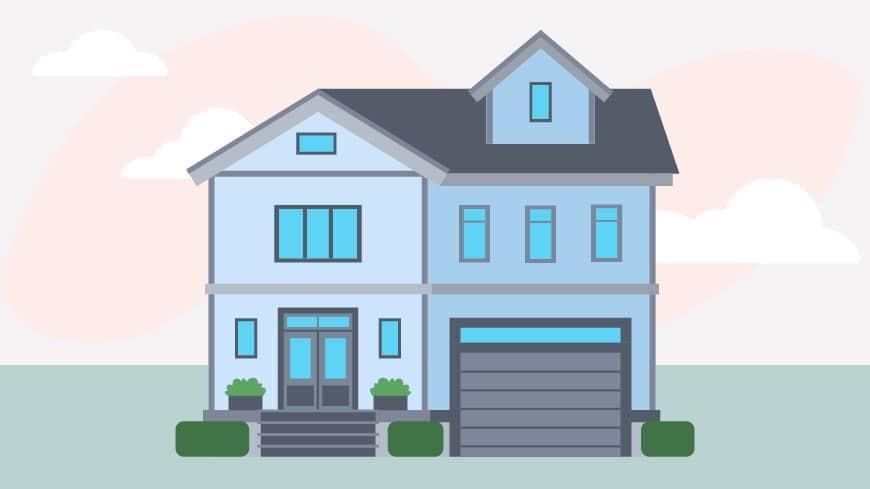What are the different types of mortgage insurance?

When closing on a new mortgage, you won’t be the only one taking on risk. Your lender can’t be completely sure you’ll be able to keep up with monthly mortgage payments, and in some cases, might require a little extra certainty.
Mortgage insurance is usually paid by the borrower and works to protect the lender. Your lender will likely attach a private mortgage insurance requirement if your down payment isn’t at least 20%. However, there are a variety of mortgage insurance types that can impact your monthly bill in different ways.
What are the types of mortgage insurance?
Mortgage insurance can come in many different forms and premiums can be paid off in a variety of ways. Here’s some of the most common mortgage insurance types and how they’ll impact what you pay month to month.
- Borrower-paid mortgage insurance
- Lender-paid mortgage insurance
- Single premium mortgage insurance
- Split premium mortgage insurance
Borrower-paid mortgage insurance
The most common type of mortgage insurance is activated when the borrower can’t contribute at least 20% of the home’s purchase price for a down payment. Borrower-paid mortgage insurance, or BPMI, usually costs between 0.5%-1% of the overall loan amount annually.
If you were to take out a $300,000 mortgage with a BPMI stipulation attached, you’d be paying $1,500-$3,000 in insurance premiums each year. This cost is broken down into 12 equal payments and tacked on to your monthly mortgage bill. You’d be required to make this payment until your ownership stake in the home meets or exceeds 20% of the purchase price.
According to industry experts, the process of gaining enough equity to shed the BPMI expense takes an average of 11 years of consistent amortization.
Some lenders may allow avenues that help you cancel BPMI sooner. If your home’s value appreciates after a few years, your stake in the property will increase as well, possibly above 20% of the original purchase price. Your mortgage holder may allow the BPMI requirement to be released if this increase in value can be proven.
Refinancing is another option that could help you get rid of BPMI early. However, the cost of refinancing can be steep, so you’ll have to weigh the costs vs. potential savings and consider whether taking the step makes sound financial sense.
Lender-paid mortgage insurance
Lender-paid mortgage insurance, or LPMI, might sound like the cost is completely carried by your mortgage provider, but as the borrower you’ll end up covering this expense as well.
While creditors do pay for lender-paid mortgage insurance coverage upfront, the cost of these premiums are worked into your monthly mortgage payment in the form of a slightly increased interest rate.
Since this cost is built into the loan structure, LPMI can’t be canceled when you reach 20% equity in the home. The only way to lose the LPMI cost would be to apply for refinancing. If you choose this option, you should be aware that mortgage insurance premiums already paid will not be refundable.
Despite facing a higher interest rate, there are some benefits to having mortgage insurance premiums. Your monthly payment, even with extra interest, might end up being less than if you paid the monthly premiums yourself.

Single premium mortgage insurance
Single-payment mortgage premiums, or SPMIs, are just that: a single payment. Also referred to as single-payment mortgage insurance, SPMI requires an upfront lump sum in order to obtain coverage. The expense is typically settled as part of the closing costs, with some borrowers opting to have the payment financed into their mortgage.
Compared to BPMI, your monthly mortgage payment with SPMI will be less, allowing you to finance a greater amount when buying a home. By getting this stipulation taken care of right away, you won’t have to worry about building enough equity to cancel the requirement.
Just like other payment methods, SPMI is non refundable. This presents a disadvantage if you were to refinance or sell after only a few years of paying off the loan, since you won’t be able to make that money back.
An SPMI can be difficult for some borrowers since mortgage insurance typically becomes a requirement when buyers lack the capital to make a substantial down payment. If an additional upfront expense would prevent you from buying a home, the SPMI avenue might not be the best option to pursue.
Split premium mortgage insurance
One of the more uncommon forms of paying for mortgage insurance would be via a split-premium plan. Structured as a combination of BPMI and SPMI, split-premiums are partially paid in a lump sum at closing, with the rest of the cost tacked on to your monthly mortgage bill.
You might decide on a split-premium if the full cost of borrower-paid premiums restrict your borrowing capacity. By paying off some of the mortgage insurance upfront, your extra monthly finances can go towards paying off a larger loan.
Both the upfront and financed cost of mortgage insurance are again taken as a percentage of the total mortgage, and could possibly range from 0.5% to 1.25%.
How long do you have to pay mortgage insurance?
Mortgage insurance might be a burden when you start paying off your mortgage, but settling this expense won’t haunt you throughout the course of your loan. When the loan-to-value ratio drops below 80%, meaning you’ve gained at least 20% equity in the home, you’ll be able to request that the requirement gets dropped from your monthly bill.
If the loan to value ratio drops below 78%, your lender is obligated to automatically eliminate mortgage insurance conditions from your loan agreement. Say, for example, you could only contribute a down payment option of 15%. This would require you to pay for mortgage insurance under most lending agreements. However, if you made timely mortgage payments over the course of several years, you would make considerable headway while paying off the loan’s balance.
Your down payment, plus the amount of the loan principal you’ve paid off so far, equals the amount of equity you’ve built in the property. Under the federal Homeowners Protection Act, any PMI requirement is canceled when that amount exceeds 22% of the home’s purchase price.
In conclusion
While the cost of mortgage insurance can be settled in many different ways, the expense is almost always carried by you as the borrower. This coverage also enables you to purchase a home with as little as 3% down on a conventional mortgage, where it could take years to save enough to put 20% down.
If you’ve been paying mortgage insurance premiums for a while, there are some avenues you could take to drop this requirement. Once you’ve gained enough equity, you could request that your coverage be canceled or look into refinancing your home.




